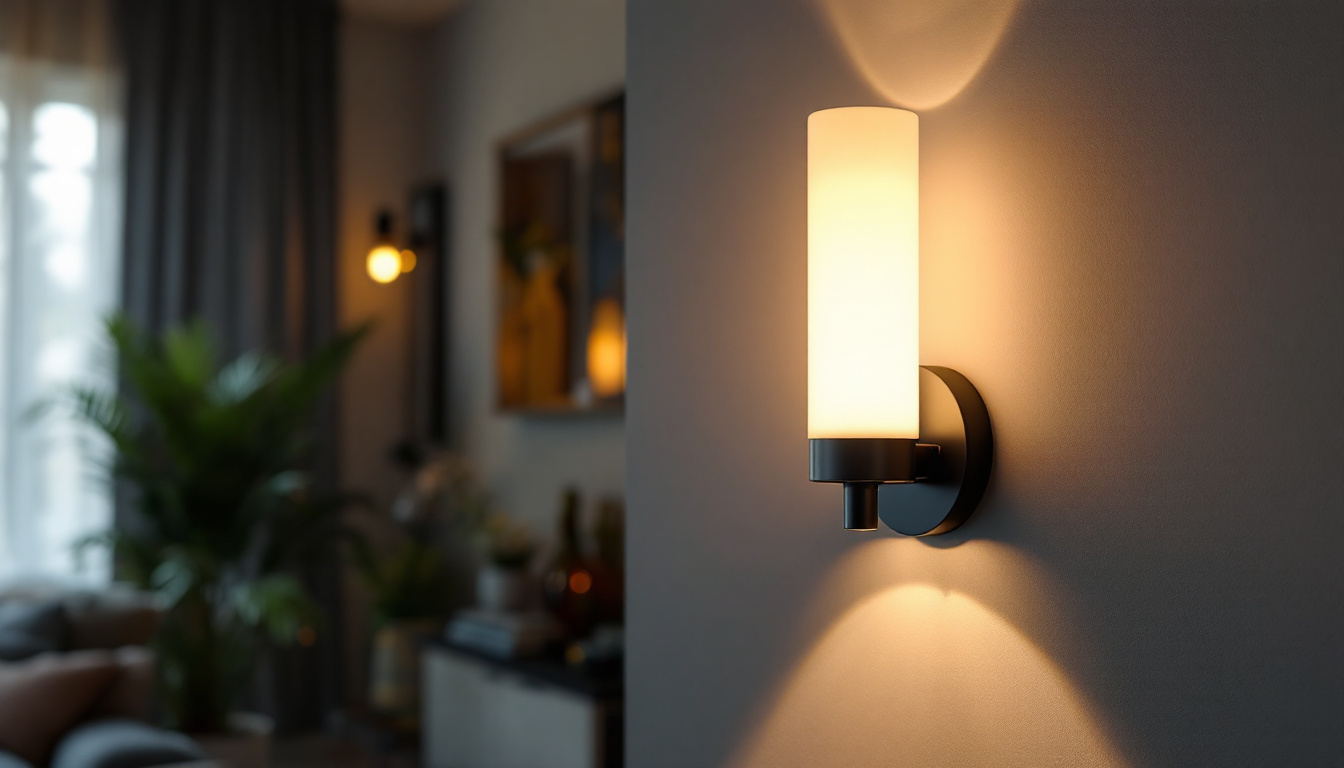
The world of lighting has undergone significant transformations over the years, with the hanging lamp pendant emerging as a key player in this evolution. Once considered a mere utility, lighting has become a crucial element of interior design, enhancing aesthetics and functionality in both residential and commercial spaces. This article delves into the journey of hanging lamp pendants, exploring their origins, design innovations, and their impact on the lighting industry.
Understanding the evolution of hanging lamp pendants requires a glance back at their historical context. Lighting has been an integral part of human civilization, with early forms dating back to the use of fire. As societies progressed, so did the methods of illumination.
The transition from oil lamps to electric lighting marked a pivotal moment in the history of illumination. Oil lamps, often suspended from ceilings, provided a warm glow but posed safety risks. The advent of electricity introduced new possibilities, allowing for the creation of more intricate designs and safer options for lighting spaces.
Electric hanging lamp pendants quickly became popular in homes and public spaces, offering both functionality and style. The ability to control brightness and the introduction of various bulb types expanded the versatility of these fixtures, making them suitable for diverse applications. This shift also led to the development of specialized lighting techniques, such as task lighting and ambient lighting, enhancing the overall experience of interior spaces. The introduction of dimmers and smart lighting technology further revolutionized how we interact with light, allowing for personalized atmospheres that cater to different moods and activities.
As design trends evolved, so did the aesthetics of hanging lamp pendants. The Art Deco period, for instance, saw the emergence of geometric shapes and bold colors, while mid-century modern designs favored minimalism and organic forms. Each era brought its unique flair, influencing the materials and styles used in pendant lighting.
Today, the trend leans towards a blend of vintage and contemporary styles, with an emphasis on sustainability and energy efficiency. This evolution reflects a growing awareness of environmental concerns, prompting designers to explore eco-friendly materials and energy-saving technologies. Reclaimed wood, recycled metals, and LED bulbs are becoming staples in modern pendant designs, allowing consumers to make choices that align with their values. Additionally, the rise of customizable lighting solutions has empowered homeowners to select fixtures that not only illuminate their spaces but also express their personal style, creating a unique interplay between function and artistry in interior design.
Hanging lamp pendants have not only evolved in style but also in technology. The integration of smart technology into lighting fixtures has revolutionized the way we interact with our environments.
Smart hanging lamp pendants are now equipped with features that allow users to control lighting through mobile applications or voice commands. This innovation enhances convenience and adaptability, allowing lighting to be tailored to specific moods or activities. Dimming options, color temperature adjustments, and scheduling capabilities are just a few examples of how technology has transformed pendant lighting.
Moreover, the rise of LED technology has drastically improved energy efficiency, offering longer lifespans and lower energy consumption compared to traditional bulbs. This shift not only benefits consumers through reduced electricity bills but also contributes to a more sustainable future.
Furthermore, the incorporation of sensors in smart lighting systems has introduced an additional layer of functionality. Motion sensors can automatically adjust lighting based on occupancy, ensuring that spaces are only illuminated when needed. This not only enhances energy savings but also adds a level of security, as lights can be programmed to simulate occupancy when homeowners are away, deterring potential intruders.
In recent years, there has been a noticeable shift towards sustainable materials in the production of hanging lamp pendants. Designers are increasingly opting for recycled metals, glass, and eco-friendly finishes. This trend aligns with the growing consumer demand for environmentally responsible products.
Additionally, the use of natural materials such as wood and bamboo has gained popularity, adding a touch of warmth and organic texture to lighting designs. These materials not only enhance the aesthetic appeal but also promote a connection to nature, which is increasingly valued in modern interior design.
As consumers become more eco-conscious, brands are also exploring innovative ways to reduce their carbon footprint throughout the manufacturing process. Techniques such as 3D printing are being utilized to minimize waste, allowing for the creation of intricate designs without the excess material typically associated with traditional manufacturing methods. This approach not only supports sustainability but also opens up new avenues for creativity, enabling designers to experiment with forms and structures that were previously unattainable.
The versatility of hanging lamp pendants makes them suitable for a wide range of applications, from residential to commercial spaces. Their ability to blend functionality with style allows them to enhance various environments.
In residential settings, hanging lamp pendants serve as focal points in dining areas, kitchens, and living rooms. They can be used to create ambiance, highlight architectural features, or provide task lighting. The choice of design, size, and placement can significantly influence the overall aesthetic of a space.
For instance, a cluster of small pendant lights can create an intimate atmosphere in a dining area, while a large, statement pendant can serve as a dramatic centerpiece in a vaulted ceiling space. The flexibility in design allows homeowners to express their personal style while meeting practical lighting needs.
In commercial environments, hanging lamp pendants play a crucial role in branding and customer experience. Restaurants, cafes, and retail spaces often utilize pendant lighting to create a specific ambiance that aligns with their brand identity.
For example, a trendy café may opt for industrial-style pendants to evoke a rustic charm, while a high-end boutique might choose elegant glass fixtures to convey sophistication. The strategic use of hanging lamp pendants can enhance the overall atmosphere, influencing customer perceptions and behaviors.
While hanging lamp pendants offer numerous benefits, there are also challenges and considerations to keep in mind. Understanding these factors is essential for lighting contractors and designers to ensure successful installations.
One of the primary challenges in using hanging lamp pendants is determining the appropriate height and scale for the space. Pendants that are too low can obstruct views and create hazards, while those that are too high may fail to provide adequate illumination.
It is crucial to consider the ceiling height, the size of the room, and the intended purpose of the lighting. A general guideline is to hang pendants 30 to 36 inches above a dining table or countertop, ensuring they provide sufficient light without overwhelming the space.
Proper wiring and installation are vital for the safety and functionality of hanging lamp pendants. Lighting contractors must ensure that electrical connections are secure and comply with local building codes. Additionally, the weight of the fixture must be considered, as heavier pendants may require additional support.
Choosing the right mounting hardware and following manufacturer guidelines can prevent potential issues down the line. It is advisable to consult with a licensed electrician for complex installations to ensure safety and compliance.
The future of hanging lamp pendants looks promising, with ongoing innovations and trends shaping their evolution. As technology continues to advance, it is expected that smart features will become more prevalent, offering enhanced control and customization options for users.
As home automation systems gain popularity, the integration of hanging lamp pendants with these technologies will likely become standard. This integration will enable users to create cohesive lighting schemes throughout their homes, controlled seamlessly through a single interface.
Imagine a scenario where a homeowner can adjust the lighting in their kitchen, living room, and dining area with a single command. This level of convenience not only enhances user experience but also promotes energy efficiency by allowing users to manage their lighting more effectively.
The emphasis on sustainability is expected to continue shaping the design and production of hanging lamp pendants. As consumers become more environmentally conscious, manufacturers will likely respond by developing innovative solutions that prioritize eco-friendly materials and energy-efficient technologies.
Designers may explore new ways to incorporate renewable resources, such as solar-powered lighting, into pendant designs. This commitment to sustainability will not only appeal to eco-conscious consumers but also contribute to the broader goal of reducing the environmental impact of the lighting industry.
The evolution of hanging lamp pendants reflects broader trends in the lighting industry, showcasing a blend of historical significance, design innovation, and technological advancements. As these fixtures continue to evolve, they will remain a vital component of interior design, enhancing both functionality and aesthetics in a variety of settings.
For lighting contractors, understanding the history, applications, and future trends of hanging lamp pendants is essential for providing clients with informed recommendations. By staying abreast of industry developments and embracing innovative solutions, professionals can ensure that their lighting designs meet the evolving needs and preferences of consumers.
Ultimately, the hanging lamp pendant stands as a testament to the dynamic nature of the lighting industry, illustrating how a simple fixture can transform spaces and elevate design. As we move forward, the possibilities for these versatile lighting solutions are boundless, promising an exciting future for both designers and consumers alike.
As you embrace the future of hanging lamp pendants and seek to enhance your design projects, LumenWholesale is here to support your journey. We provide contractors with an exceptional range of top-quality, spec-grade lighting products at unbeatable wholesale prices. With our commitment to quality, affordability, and convenience, you can trust that you’re getting the best value for your lighting needs. Say goodbye to inflated markups and hello to hassle-free bulk buying with free shipping. Elevate your lighting designs today by visiting Wholesale Lighting at the Best Value and discover how we can brighten your world without breaking the bank.

Discover how outdoor industrial ceiling fans boost lighting contractors’ profitability by reducing energy costs and enhancing workspace comfort.

Discover the diverse world of fluorescent tubes and understand why staying informed is crucial for lighting contractors.

Discover how UFO LED lamps are revolutionizing the lighting industry and offering lucrative opportunities for contractors.

Discover the common pitfalls lighting contractors face when installing LED wall sconces.